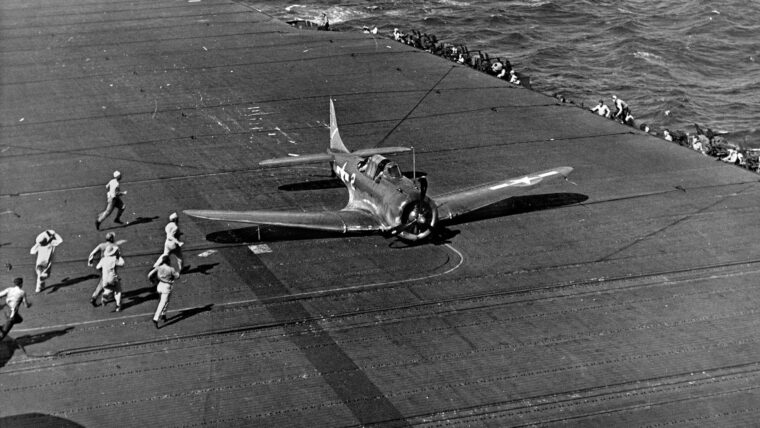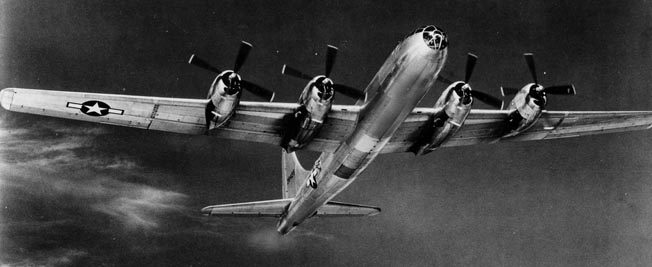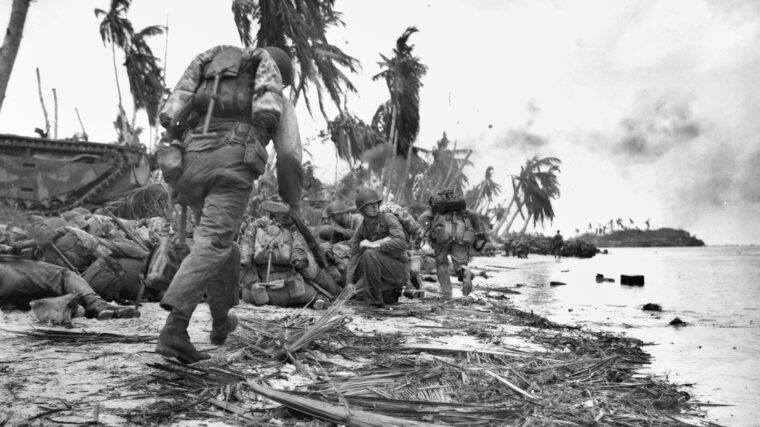
Pacific Theater
Oahu’s Museums and Memorials
By Flint WhitlockThere are few places on earth that have as many World War II museums, memorials, and monuments located in such a small area as the island of Oahu. Read more

The Pacific Theater during World War II is generally regarded as the area of military confrontation between the Allied powers and Imperial Japan. The Pacific Theater consists of the entire operational expanse of the war from the Aleutian Islands in the north to Australia in the south, including island chains such as the Solomons, Gilberts, Marshalls, and Marianas. The China-Burma-India (CBI) Theater is also considered a major component of the Pacific Theater.

Pacific Theater
There are few places on earth that have as many World War II museums, memorials, and monuments located in such a small area as the island of Oahu. Read more

Pacific Theater
April 18, 1942, will forever live in American military glory as the date of the Jimmy Doolittle Raid on Tokyo––a gutsy, never-before-attempted combat mission to fly North American B-25 Mitchell bombers off the deck of an aircraft carrier and attack an enemy capital. Read more

Pacific Theater
Suppose you found a magic door that opened onto some of the most crucial battles fought in the Pacific during World War II? Read more

Pacific Theater
When the four members of the Japanese surrender delegation climbed aboard the deck of PT-375 on September 8, 1945, the boat’s skipper, Lieutenant Henry “Hank” Blake, directed the men to an open area on the forward deck where the Japanese could be closely watched for any signs of treachery. Read more

Pacific Theater
On October 20, 1944, General Douglas MacArthur redeemed his personal pledge to the people of the Philippines. Read more

Pacific Theater
Major Sam P. Bakshas woke up that morning with the secrets in his head. He was one of the men flying B-29 Superfortress bombers from three Pacific islands—Guam, Saipan, and Tinian. Read more

Pacific Theater
After the Japanese stopped resisting in the skies over Rabaul and pulled their aircraft out of the Solomons and Bismarcks battle area in mid-February 1944, it began to appear that U.S. Read more

Pacific Theater
During early World War II operations in the Pacific, Geoff Fisken would become one of the most outstanding pilots of the RNZAF—the Royal New Zealand Air Force. Read more

Pacific Theater
The fading daylight of August 6, 1942, found the American heavy cruisers Astoria and Chicago as part of Task Force 61, under the command of Vice Admiral Jack Fletcher, steaming toward the South Pacific island of Guadalcanal. Read more

Pacific Theater
Mildred “Midge” Gillars was born in Portland, Maine, took drama lessons in New York City, appeared in vaudeville, worked as an artist’s model in Paris and a dressmaker’s assistant in Algiers, and taught English at the Berlitz School in Berlin before—motivated by love and fear—she became the notorious “Axis Sally,” one of the Nazis’ leading radio propagandists. Read more

Pacific Theater
One blazing hot day in mid-January 1942, Cornelius “Con” Page, an Australian plantation manager and coastwatcher on Tabar Island 20 miles north of New Ireland reported on his radio a Japanese aircraft passing Tabar and heading for Rabaul on the Australian-administered island of New Britain. Read more

Pacific Theater
Above all, the island was defendable. From Ritidian Point in the north to the extreme southern coastline, Guam is 34 miles long, made in an irregular shape covering 228 square miles, the largest of all Pacific islands between Japan and New Guinea. Read more

Pacific Theater
Many associate Massachusetts with the Kennedy family, and its influence is evident at Battleship Cove. The World War II record of the Kennedys is a distinguished one. Read more

Pacific Theater
Prologue: At the start of World War II, Midway Atoll was a key U.S. base in the central Pacific. Read more

Pacific Theater
The West Point Museum, located in Olmsted Hall and adjacent to the Visitor Center at the United States Military Academy, about an hour’s drive north of New York City, contains what is considered to be the oldest and largest diversified public collection of military artifacts in the Western Hemisphere. Read more

Pacific Theater
BACKSTORY: In World War II, the American submarine force was inordinately small—just 252 total boats, compared to the more than 1,100 deployed by Germany and over 600 built by Japan. Read more

Pacific Theater
BACKSTORY: After working in a Civilian Conservation Corps (CCC) camp in Idaho, Ray Daves enlisted in the Navy in the spring of 1938 and reported for basic training the following year. Read more

Pacific Theater
It sent Japanese warships to the bottom of the ocean. It pulverized fortifications on Japan’s home islands. Read more

Pacific Theater
World War II in the Pacific was fought in thousands of remote locations. The island of Borneo was the site of one of the least known clandestine operations of the conflict, led by an adventurous, but arrogant, anthropologist. Read more

Pacific Theater
The very nature of war means that some participants will be killed and others will be wounded, and some estimate the deaths in WWII to be around 85 million. Read more